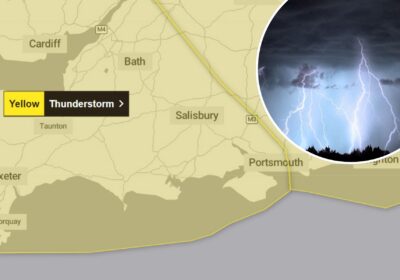by Susie Curtin
EARLY April, the warmth of the sun is on my shoulders as I follow the paths over the heathland. I am glad to be out and about following a rather sad week, in which I have had to say goodbye to my beloved cat, Henry, who has been my funny, loving companion for 11 years after unexpectedly turning up at my door. I am sure many of you will appreciate how difficult it is to lose a pet and how the tears can fall like April showers as waves of loss and grief come and go.
But today, out here on this warm, sunny afternoon, my heart is lifting for the first time in days. There are meadow pipits, stonechats and the odd, grumpy Dartford warbler. The warmth has also stirred a pair of lizards who are lounging in the sunshine – together they show me that kinder, warmer times lie ahead. Springtime is a period of hope and anticipation.
As I enter a wooded area, I stop to listen to the loud, repetitive drumming of a woodpecker who is either creating a new nest site or staking his claim to the territory. As his tapping ceases and the sound of the wind abates, I become aware of a feint, gently rustling noise coming from near my feet. I look down and there, to the side of the path, is a scruffy, fizzing mound of woodland debris and thousands of shifting creatures. The wood ants have emerged from their winter slumber and are gathering heat from the sun’s rays.
Now, ants are probably not the most attractive of beings. In fact, there is something quite repellent about them. But over the years, and since working with entomologists, I have come to appreciate the world of insects, for their lives are extraordinary.
The southern wood ant is our largest ant. This species is a reddish brown in colour with a black head and abdomen. Wood ants live in large complex social groups comprised of queens, female workers and males. They build very large, thatched mounds made from conifer needles, twigs, heather and grass in a unique construction that makes their home waterproof and insulated to allow an optimal temperature. There is as much underground as you can see above ground. Inside, there is the queen’s chamber for her and her brood, store cupboards and a graveyard, and tunnels that connect to other colonies. Their favourite food is honeydew from aphids which they collect from the pine trees. In return, the wood ants tend to the aphids, stroking them and protecting them from predators, thus ensuring future supplies.
Ant societies are extremely well organised. Everyone has a role which they perform tirelessly in a spirit of unselfish unity. They are strong, hardworking and determined, never giving up when the going gets hard. But, as I watch this seething mass of endeavour, I remember the old Aesop’s fable of The Ant and the Grasshopper, and how sorry I felt for the grasshopper when the ants refused him food. For ants are smart, they plan and store sufficient resources for the winter. They therefore laughed at the grasshopper when he explained that he had been singing all summer and had not had time to store up food, and now he was hungry and dying, but the ants just told him to dance for his supper and die. The adage being that there is time for work and time for play, and he had wasted his time.
With that thought, I left the ants to their work while I contemplated the extent to which nature is kind or unkind. How much love I would have missed had I not been kind to the poor, hungry cat at my door looking for food and shelter.
Dr Susie Curtin is a nature writer and qualitative researcher; wildlife travel blog at rewildingjourneys.com/; email curtin.susanna@gmail.com









Leave a Reply